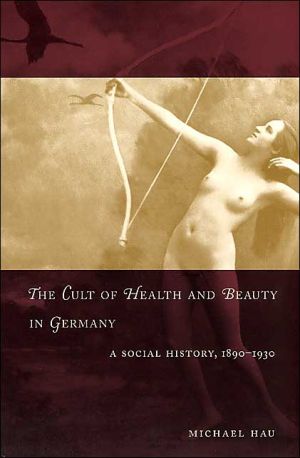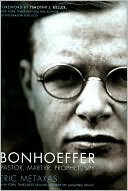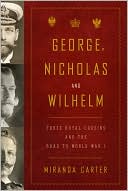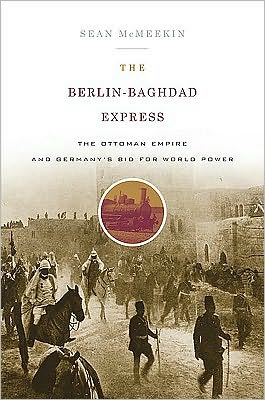The Cult of Health and Beauty in Germany: A Social History, 1890-1930
From the 1890s to the 1930s, a growing number of Germans began to scrutinize and discipline their bodies in a utopian search for perfect health and beauty. Some became vegetarians, nudists, or bodybuilders, while others turned to alternative medicine or eugenics. In The Cult of Health and Beauty in Germany, Michael Hau demonstrates why so many men and women were drawn to these life reform movements and examines their tremendous impact on German society and medicine.\ Hau argues that the...
Search in google:
From the 1890s to the 1930s, a growing number of Germans began to scrutinize and discipline their bodies in a utopian search for perfect health and beauty. Some became vegetarians, nudists, or bodybuilders, while others turned to alternative medicine or eugenics. In The Cult of Health and Beauty in Germany, Michael Hau demonstrates why so many men and women were drawn to these life reform movements and examines their tremendous impact on German society and medicine.Hau argues that the obsession with personal health and fitness was often rooted in anxieties over professional and economic success, as well as fears that modern industrialized civilization was causing Germany and its people to degenerate. He also examines how different social groups gave different meanings to the same hygienic practices and aesthetic ideals. What results is a penetrating look at class formation in pre-Nazi Germany that will interest historians of Europe and medicine and scholars of culture and gender. Journal of Modern History “Hau applies a sophisticated interpretive lens to a particularly illuminating region of German social and cultural history.”— Kevin Repp
The Cult of Health and Beauty in Germany: a Social History, 1890-1930\ \ By Michael Hau \ University of Chicago Press\ Copyright © 2003 Michael Hau\ All right reserved.\ ISBN: 0226319768 \ \ \ Chapter 1 - LIFE REFORM AS BURGERLICHE KULTUR\ \ Herr Schmidt had long suffered from pain in the stomach and intestines as a result of his nervousness. Because his career as a schoolteacher was threatened by his illness, he went to a regular physician with a good reputation and was advised to eat only light, nonirritating foods. Although his pains decreased for a while, they returned and worsened so much that he turned to a specialist in stomach and intestinal ailments. The therapeutic prescriptions, consisting of medicine and diet, failed as well. When Schmidt was completely exhausted and weighed only 51 kilograms (112 pounds), he took a vacation from his job and went to a natural therapy sanatorium (Naturheilanstalt) in Chemnitz. After two weeks his symptoms were considerably alleviated: He could sleep again, and his stomachaches and headaches had almost disappeared, results that he attributed to the rest he had given to his irritated nerves. Schmidt felt that he was on his way back to full health with a therapy that combined water, steam baths, electricity, and massage and that stressed rest and exercise. He hoped ultimately to overcome the somatic symptoms of his nervousness, which, in his view, were caused by theemotional stress and the physical and mental overexertion demanded by his job. \ \ Schmidt's experience was characteristic of those of many people living at the turn of the century who experimented with orthodox as well as alternative therapies in their unceasing quest for health. Frequently this quest led people to become involved in one of the hygienic and therapeutic reform associations that mushroomed during that period. The membership of the German League of Natural Living and Therapy Associations (Deutscher Bund der Vereine fur naturgemasse Lebens- und Heilweise) grew from about 19,000 in 1189 to about 148,000 in 1914. Along with some smaller groups such as the Vegetarian League and some physical culture organizations, these associations made up the bulk of what became known as the life reform movement. Life reformers called on their contemporaries to change their entire way of life. Modern people, they believed, were on a path of progressive degeneration that could only be reversed if they once again lived in accordance with human nature. Life reformers attributed illness and lack of success in their personal lives to the unhealthy living habits they had acquired as members of a highly industrialized and urbanized society. They claimed that only exercise, proper diets, and natural therapies could guarantee people a healthy, happy, and successful life. \ \ In this chapter I first try to situate the life reform movement in the context of contemporary middle-class (in the sense of burgerlich, or, loosely, "bourgeois") German culture, then discuss the attractiveness of life reform in terms of common burgerliche value orientations and the experiences of some of its supporters. I argue that the rise of life reform can be understood in part as the expression of a growing reflexivity centered on the healthy body as a precondition for success in a competitive, modern, urbanized society; conversely, life reformers conceptualized their inability to perform in terms of illness or even degeneracy. Therefore, the movement owed its success largely to its promise to deliver adherents from professional and personal failure. \ \ Burgerliche Kultur and Health-Mindedness\ \ The recent historiography of the German Burgertum has attempted to describe the German middle classes in terms of common cultural orientations and behavioral norms that distinguished them from other social groups. When referring to these value orientations I will always use the term burgerlich instead of bourgeois, since the latter term is loaded with Marxist assumptions concerning economic class that are misleading in this context. Jurgen Kocka has pointed out that the Burgertum was a social formation comprised of groups that were vastly different in terms of their education, their socioeconomic status, and their relation to the means of production. During the late nineteenth century, those who would have considered themselves part of the Burgertum included employers, civil servants, higher-level managers of large enterprises, simple clerks (Handlungsgehilfen), and independent artisans and shopkeepers, who constituted the so-called old middle class (alter Mittelstand). \ \ Although the wealthier and better educated of these groups certainly would have denied the lower middle classes' claims to respectability, all of them valued personal achievement and individual performance, Bildung (in the humanistic sense of a harmonious development of all aspects of one's personality), and the belief that people could determine their own futures. According to Kocka, these burgerliche mentalities and values and their expression in the discursive styles and conventions of the Burgertum constituted a distinct culture that served to distinguish the Burgertum from other social groups in German society. In the late eighteenth and early nineteenth centuries, the newly emerging burgerliche Kultur served as a common identity for groups--educated civil servants, intellectuals, and the early entrepreneurs--that had no clear place in the corporatist structure of German society. \ \ Health-mindedness was a core value for this emerging burgerliche Kultur. From the late eighteenth century onward, middle-class writers emphasized the importance of health as a precondition for individual performance and personal achievement. Health was perceived as the product of a rational, hygienic lifestyle that stressed self-restraint and moderation in all aspects of life. The hygienic literature of the time contrasted these burgerliche virtues with the idleness and debauchery of the nobility. It rejected the luxuries and refinements associated with the aristocracy and, like life reform literature a century later, called for a return to the simplicity of nature. This meant following dietetic rules, a regime that stressed sound nutrition, fresh air, sunlight, exercise, work, and rest as well as a balanced emotional life. Although such dietetic prescriptions were a reformulation of those of ancient Galenic medicine, they constituted a normative system for the Burgertum that it could use to criticize the nobility. \ \ If the emphasis on rationality and healthy habits allowed the Burgertum to create a positive identity in opposition to the aristocracy, it also, in their view, underscored differences between the responsible and thrifty middle classes and the sexually immoral, irresponsible, and filthy lower classes. As the nineteenth century progressed and the wealthy Burgertum increasingly appropriated the conspicuous consumption patterns and other status markers of the nobility, members of the Burgertum increasingly defined themselves in opposition to the working class instead. From the middle of the nineteenth century onward, employers tried to use factory sickness funds to inculcate regular habits and work discipline in the emerging industrial proletariat by denying workers insurance benefits if they did not follow the hygienic rules laid down in factory regulations. Alfons Labisch has argued that health as a norm of the Burgertum served to enforce social discipline by ensuring that irresponsible proletarians would become responsible industrial workers. \ \ Members of the late nineteenth-century life reform movement shared many of the value orientations and cultural premises that have been described by historians of Germany as burgerlich--especially the emphasis on a rational lifestyle that stressed self-discipline and moderation and the value accorded to personal achievement and Bildung. Further, the membership of life reform associations was drawn predominantly from the middle classes. The movement reflected the diversity and fragmentation of these middling sectors of German society. Natural therapy voluntary associations included white-collar workers, shopkeepers, small entrepreneurs, artisans, technicians, and skilled workers, as well as professionals, civil servants, and other members of the educated middle classes (Bildungsburgertum). \ \ Membership data for the Berlin local of the German Association for Rational Body Discipline (Deutscher Verein fur vernunftige Leibeszucht) show that the vast majority of the members were from the new middle or lower middle classes: Merchants, clerks, low-level administrators, and members of modern technical professions (such as engineering) accounted for about 60percent. About a quarter of the members, most prominent among them academic professionals and university students, had some form of higher education and might be considered Bildungsburger.10 Members of the new middle classes were often highly skilled, but they did not have the same neohumanistic education and schooling on which the Bildungsburgertum's status claims rested. (As we will see in chapter 2, tensions between these groups were expressed in arguments about the role of physical culture in the cultivation of the human personality.) In marked contrast to the natural therapy movement, the physical culture associations counted no artisans and far fewer skilled workers among their members. This difference might be explained by the fact that physical culture was a rather time-consuming activity, and as such may not have appealed to artisans and skilled workers, who had physically demanding jobs and little leisure time; physical exercise was particularly attractive to people who sought compensation for sedentary work. It is also important to keep in mind that the membership structure of other physical culture associations might have been rather different--the situation in Berlin, for instance, is probably not representative of similar associations in provincial cities such as Koblenz. \ \ In examining the social composition of the life reform movement, historians have relied mainly on the membership data published in journals, address books, and other publications of the voluntary associations. This is not surprising, because these sources contain the only hard data on the social composition of the movement that we have. Yet, it is problematic to simply equate the movement with the membership of the life reform associations, which were dominated by middle-class males. For one thing, such an approach does not account for women who participated with their husbands but did not formally join an association. The large number of health advice books specifically written for women is a clear indication that women were as preoccupied with their personal fitness, health, and beauty as were men, although they made up only 10 to 25 percent of the formal membership of the life reform associations for which there are data on gender composition.\ \ The numbers of people who were concerned with health reform thus exceeded the official membership of life reform associations. It is true, there were almost no representatives of the wealthy upper classes among either the leadership or the membership of such associations. But that does not mean that the wealthy were not affected by the new health-consciousness. Although the upper classes rarely participated in middle-class life reform associations, they frequented expensive sanatoriums and spas whose services were difficult to afford for the middling sectors of the Burgertum that provided the organizational backbone of the life reform movement. \ \ Although the evidence is too sketchy to permit a clear assessment of the ways in which most life reform associations' memberships changed after the turn of the century, their social basis seems to have broadened to include substantial numbers of skilled workers. The membership of the homeopathic association in Heidenheim/Brenz in Wurttemberg, which has been examined by the historian Eberhard Wolff, became increasingly heterogeneous in the early twentieth century. In the 1880s and 1890s the members and officials of the association were mainly recruited from the middle and lower middle classes, but after the turn of the century the share of workers--especially skilled workers (Facharbeiter)--increased substantially. Between 1908 and 1912 the percentage of workers who were members of natural therapy associations grew from about 24 to 28 percent. The increase might be taken as a sign of what has been called the Verburgerlichung--the acceptance of burgerliche values and norms--by at least some sectors of the working class. By adopting a self-consciously healthy and rational lifestyle, workers were indeed accepting the values of the Burgertum. If we are to better understand the relation between such burgerliche value orientations and the wide social appeal of health reform, however, the quantitative evidence concerning the social composition of the life reform movement has to be supplemented with qualitative evidence drawn from contemporary health advice books and medical autobiographies. \ \ Subjective Experiences of Personal Illness \ \ In order to unearth the life reformers' subjective experiences of illness, one has to look at two different kinds of sources. In the first group are those in which regular physicians or life reformers tried to address a popular audience in public lectures, commercial health advice books, or articles in life reform periodicals. If they were to be persuasive, physicians and life reformers had to be sensitive to the potential concerns of their audiences. Although lectures and health advice books are normative sources, it is still possible to learn at least a few things about the motivations of those who turned to this movement. Life reformers who wrote popular health advice books often knew how to address prospective converts because they had similar hopes and anxieties before they became converts themselves. \ \ An even more important source for this kind of information, however, is the medical autobiography. Many such autobiographies were written by life reformers in order to convince people of the effectiveness of an improved lifestyle. Most are merely confessionals whose authors recount their conversion to a natural lifestyle and their miraculous salvation from a supposedly life-threatening illness. A few individuals, however, have left examples that go beyond the conversion and salvation narrative to suggest complex motives and expectations. A careful interpretation reveals which subjective somatic and psychological experiences the authors regarded as pathological. \ \ The most important common goal of participants in the life reform movement was personal health. Some adherents of natural therapies, vegetarians, and physical culturists tried to come to terms with debilitating illnesses such as tuberculosis. Life reformers also addressed contemporary fears concerning the devastating effects of venereal disease on men, women, and their families, and (as I show in greater detail in chapter 3) the assignment of responsibility for the spread of venereal disease became an issue in contemporary gender politics. \ \ Many life reformers had to come to terms with subjective experiences of personal inadequacies. Life reform discourse medicalized contemporary worries about professional success, intimate relationships, and physical beauty. Both sexes, for example, were concerned about their physical attractiveness to the opposite sex, but this issue was especially pressing for middle-class women, who were often forced to find a provider on the marriage market. One of the big selling points of cures in contemporary sanatoriums was the promise of weight loss by means of dieting (Entfettungskuren) or weight gain by means of better nutrition (Mastkuren). The ideal was a leaner, more muscular body composed not of fat but of "firm healthy flesh." The catalogue for Ziegelroth's natural therapy sanatorium in Zehlendorf promised that therapies tailored to individual needs would help people succeed in obtaining a more ideal physique: "It happens quite frequently that patients [Kurgaste] arriving at the same time either should lose weight or gain it; and it is the subject of frequent joking and general satisfaction how beautifully the fat vanishes in the case of the obese and how the emaciated gain weight." Since life reformers as well as orthodox physicians claimed that beauty was an expression of perfect health, people had to face the additional pressures of living up to the lofty aesthetic ideals of an increasingly body-conscious society. Indeed, one of the ironies of the health-consciousness of the period was that it perpetuated the feelings of personal inadequacy that gave rise to it. \ \ Rational, burgerliche attitudes and value orientations implied a certain goal-directedness and desire to manage one's future. Contemporary beliefs in the possibility of rationally controlling one's own life not only fueled the market for the innumerable health, sex, and marriage advice books that gave their readers tips on the management of their personal and intimate relationships. Such attitudes also found their expression in career expectations. Because many life reformers could not change their personal circumstances--the unhappy intimate relationships, the failed social aspirations, the frustrated career expectations--they focused on their bodies, the part of their existence that they could still control and discipline. Through the control of their bodies, they hoped to regain the fitness that would enable them to succeed again in the perceived struggle for survival. The notion of a career entailed professional aspirations and social expectations for each stage of the middle-class male's life cycle; as their lives progressed, middle-class men desired and were expected to move up the occupational ladder. Life reform held considerable appeal for members of the lower middle classes who dwelled at the margins of middle-class existence but nevertheless believed in the burgerliche achievement and performance ethos-- office workers, for example, and lower-level civil servants such as teachers who stood under the tight control of their superiors. At the turn of the century, clerks in dead-end jobs, for whom an independent economic existence had become increasingly illusory, and artisans, most of whom had only a precarious existence, hoped to recapture their fitness (Leistungsfahigkeit) and assert mastery over their own fate with a healthful lifestyle. \ \ Such people often attributed their professional and personal failures to nervousness, or "neurasthenia." A disorder of weak nerves or nervous irritability, neurasthenia exemplifies the negotiated process of medicalization that emerged from the interaction between life reformers and regular physicians and their common clientele. The list of potential psychosomatic symptoms for neurasthenia was endless, as the case that began this chapter demonstrated. According to Wilhelm Erb, a psychiatrist at the University of Heidelberg, neurasthenics were the largest group of people who looked voluntarily for the help of psychiatrists. He regarded neurasthenia as a disorder caused by a predisposition in the human nervous system; symptoms included an irritability of the nervous system, he thought, which made it react to smaller-than-normal stimuli. This irritability led to weakness, tiredness, and, as Erb put it, the "inability to carry out a given mental and physical performance repeatedly and with endurance." Mental overexertion, overwork, and overburdening in one's occupation, Erb claimed, were the most frequent causes of neurasthenia, because the "struggle for survival" and the advancement of one's social position demanded the mobilization of all mental powers. This disorder, therefore, was seen to be caused by the failure to live up to the demands of one's profession or career. \ \ \ \ Continues... \ \ \ \ Excerpted from The Cult of Health and Beauty in Germany: a Social History, 1890-1930 by Michael Hau Copyright © 2003 by Michael Hau. Excerpted by permission.\ All rights reserved. No part of this excerpt may be reproduced or reprinted without permission in writing from the publisher.\ Excerpts are provided by Dial-A-Book Inc. solely for the personal use of visitors to this web site. \ \
List of IllustrationsAcknowledgmentsIntroduction1Ch. 1Life Reform as Burgerliche Kultur9Ch. 2Popular Hygienic Culture, Class, and Aesthetic Norms32Ch. 3Gender and Aesthetic Norms in Popular Hygienic Culture55Ch. 4Racial Aesthetics82Ch. 5Models of Holistic Constitutionalism in Regular Medicine and Natural Therapy101Ch. 6The Constitutional Convergence: Life Reform, the "Crisis of Medicine," and Weimar Hygiene Exhibitions125Ch. 7Constitutional Typologies: Weimar Racial Science and Medicine150Ch. 8Weimar Leisure Culture: Freikorperkultur and the Quest for Authenticity and Volksgemeinschaft176Conclusion199Notes207Bibliography249Index273
\ History\ - Michael Bississ\ “The presentation is . . . buttressed by an extensive apparatus of annotation and bibliography that assists in making this book a first-rate addition to the literature on the social and cultural, as well as medical, history of modern Germany.”\ \ \ \ \ \ Journal of Social History\ - Jessica C. E. Gienow-Hecht\ “Much of Hau’s narrative will resonate with a generation today driven by the cult of fitness as exhibited in postmodern gyms, TV ads, and health advice books. Are we to look to the late nineteenth century in order to grasp the underlying meaning of this diosposition?” \ \ \ \ \ Central European History\ - Edward Ross Dickinson\ “Hau’s approach is sophisticated and original; it offers important insights; and like most really exciting books, this one raises more questions than it answers. It will be appreciated as a particularly important and fruitful beginning by students of the history of medicine, the body, eugenics and racial thought, “life reform,” and popular culture.”\ \ \ \ \ \ Journal of Modern History\ - Kevin Repp\ “Hau applies a sophisticated interpretive lens to a particularly illuminating region of German social and cultural history.”\ \ \ \ \ \ HistoryThe presentation is . . . buttressed by an extensive apparatus of annotation and bibliography that assists in making this book a first-rate addition to the literature on the social and cultural, as well as medical, history of modern Germany.”\ — Michael Bississ\ \ \ \ \ \ H-Net review“Hau’s is an intelligent and persuasive book. . . . Its combination of nuanced social historical analysis with cultural historical methods and approaches represents exemplary historical scholarship; his fascinating material and his synthesis of aesthetic and medical approaches to the body adds much needed complexity to the history of life reform, hygiene, and responses to modernity in Wilhelmine and Weimar Germany.”\ \ \ \ \ \ German History“This informed, nuanced, and richly detailed study of the life reform movement and alternative medicine in Wilhelmine and Weimar Germany makes important contributions to broader debates about modernity, class, gender, and race in German society and culture.”\ \ \ \ \ Journal of Social HistoryMuch of Hau’s narrative will resonate with a generation today driven by the cult of fitness as exhibited in postmodern gyms, TV ads, and health advice books. Are we to look to the late nineteenth century in order to grasp the underlying meaning of this diosposition?” \ \ — Jessica C. E. Gienow-Hecht,\ \ \ \ \ \ Central European HistoryHau’s approach is sophisticated and original; it offers important insights; and like most really exciting books, this one raises more questions than it answers. It will be appreciated as a particularly important and fruitful beginning by students of the history of medicine, the body, eugenics and racial thought, “life reform,” and popular culture.”\ — Edward Ross Dickinson\ \ \ \ \ \ Journal of Modern HistoryHau applies a sophisticated interpretive lens to a particularly illuminating region of German social and cultural history.”\ — Kevin Repp\ \ \








